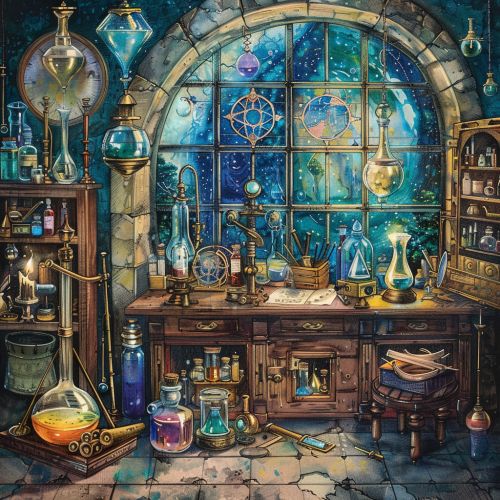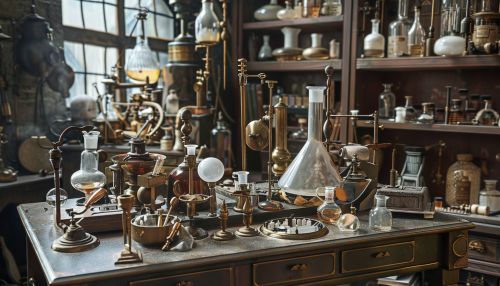History of Chemistry
Origins of Chemistry
Chemistry, as we understand it today, was preceded by its predecessor, alchemy. Alchemy, a philosophical and protoscientific tradition, was practiced throughout Europe, Africa, and Asia. It aimed to purify, mature, and perfect certain objects. The most notable goals of alchemy were the transmutation of common metals into gold or silver, and the creation of a panacea, a remedy that would cure all diseases and prolong life indefinitely. Starting with the Middle Ages, European alchemists invested much effort in the search for the philosopher's stone, a mythical substance that was believed to be an essential ingredient for either or both of those goals.


Early Chemistry in the Age of Enlightenment
During the 16th and 17th centuries, alchemy was gradually replaced by rigorous, quantitative experimental science, and the tradition became the cornerstone of today's chemistry. The distinction began with the work of the pioneer of modern chemistry, Robert Boyle. Boyle proposed that the physical world was composed of corpuscles, and differed from the Aristotelian view due to his rejection of the existence of naturally occurring qualities such as hot, cold, wet, and dry.
Modern Chemistry
The modern discipline of chemistry began to develop in the 17th century and matured in the 18th century due to the systematic work of Antoine Lavoisier on the theory of conservation of mass, which led to the law of conservation of mass. Lavoisier also worked to construct a new language for chemistry, which helped to firmly establish it as a separate discipline.
Atomic Theory
The atomic theory, first proposed in the early 19th century by John Dalton, provided a physical explanation for the law of conservation of mass. Dalton's theory stated that matter is composed of small, indivisible particles called atoms, which combine to form compounds in fixed ratios. This theory marked the beginning of chemistry's transformation from a qualitative science to a quantitative one.
Periodic Table
The periodic table, a tabular arrangement of chemical elements, was developed by Dmitri Mendeleev in 1869. The table organizes elements based on their atomic number, electron configuration, and recurring chemical properties. Elements are listed in order of increasing atomic number, which corresponds to the number of protons in an element's atomic nucleus. The table has rows called periods and columns called groups.


Quantum Chemistry
Quantum chemistry, a branch of chemistry that applies principles of quantum mechanics to chemical phenomena, emerged in the 20th century. Quantum mechanics provides a mathematical description of much of the dual particle-like and wave-like behavior and interactions of energy and matter. Quantum chemistry can be used to explain the structure of the periodic table, among other phenomena.
Chemistry Today
Today, chemistry is a robust field, encompassing a broad range of areas. The discipline is divided into several major sub-disciplines, including organic chemistry, inorganic chemistry, physical chemistry, analytical chemistry, biochemistry, and environmental chemistry. Each of these disciplines involves a unique approach to the study of matter and its properties.
